There is nothing particularly remarkable about a 1960s Leica M2 and 50mm f/2.8 Elmar, even in mint condition. But an impeccable provenance helps no end. Here’s how I stumbled upon a one-owner gem of an outfit complete with an interesting history.
I was walking along Old Street in the City of London, minding my own business as usual, when the frontage of Red Dot Cameras hove into view. It’s a brave Leica fan who can resist the mellifluous Siren calls from within this particular establishment. Anyway, I fancied a chat with Ivor and Elaine Cooper, custodians of Leicas old and new.
Anything to report? Well, said Ivor, we have just taken in a remarkable M2 kit on part-exchange and, guess what, it comes with the original hire-purchase documents from the mid 1960s. My interest quickened immediately. I am a sucker for a bit of documentation to go with any classic Leica that crosses my path. I thought it would make a nice story at the very least.
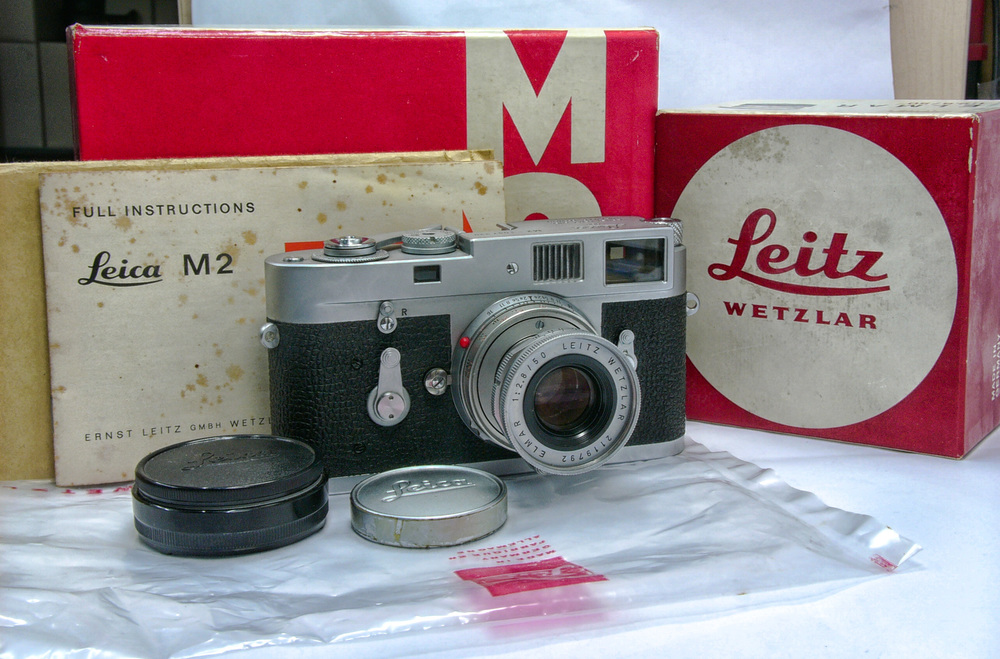
Fading resistance
It did more than that. After examining the fading document from R.G.Lewis I had a closer look at the goods. The 1964 M2 is in impressive condition and looks like it left the factory yesterday rather than in the mid sixties. It is sweet as a nut and the shutter timings sound about right (although, as Ivor pointed out, he hadn’t had time to send it off for service). Even the little L seal inside the lens mount is untouched—an aspect that will be appreciated by any buyer. Removing the bottom plate, I found the interior perfect. It looks as though a film has never passed through camera.
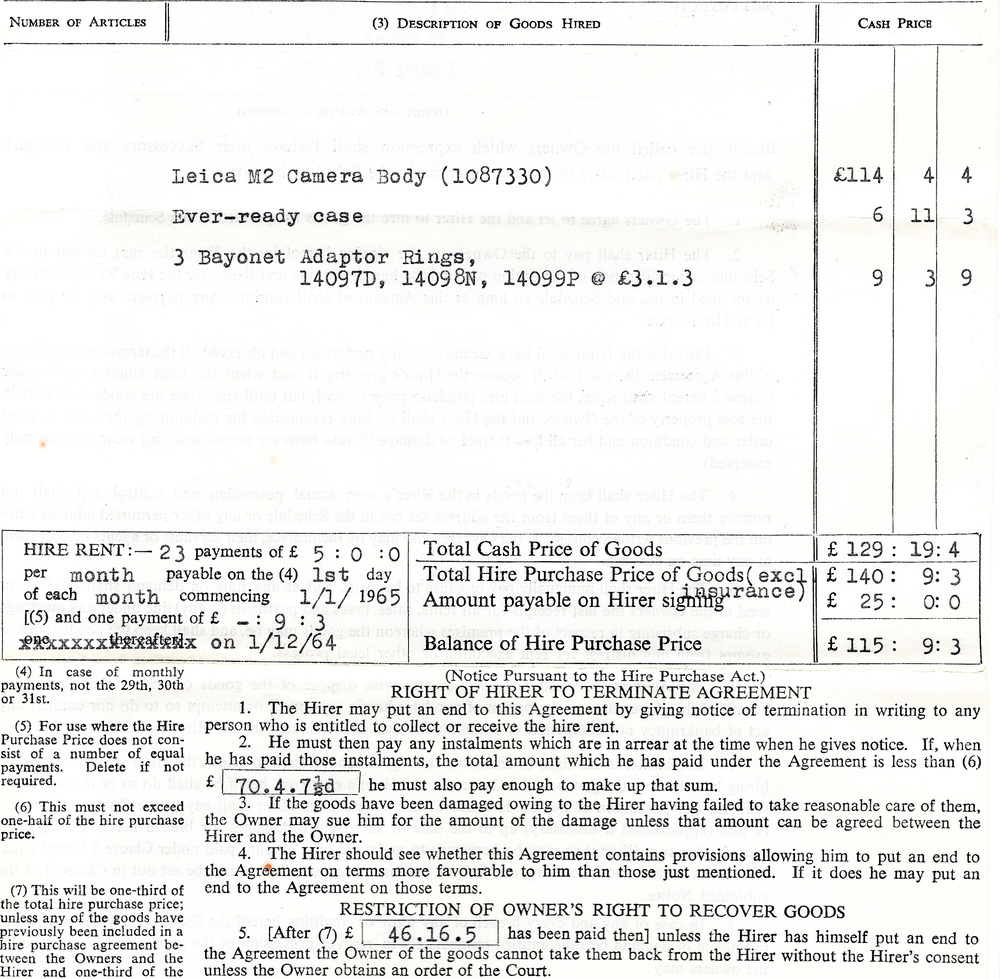
The collapsible Leitz 50mm f/2.8 Elmar is also in as-new condition and is actually slightly younger than the camera (according to the Leica Pocket Book 8th Edition, the camera was manufactured in 1963 and the lens in 1965). Together, the camera and optic make a perfect set that would delight any collector.
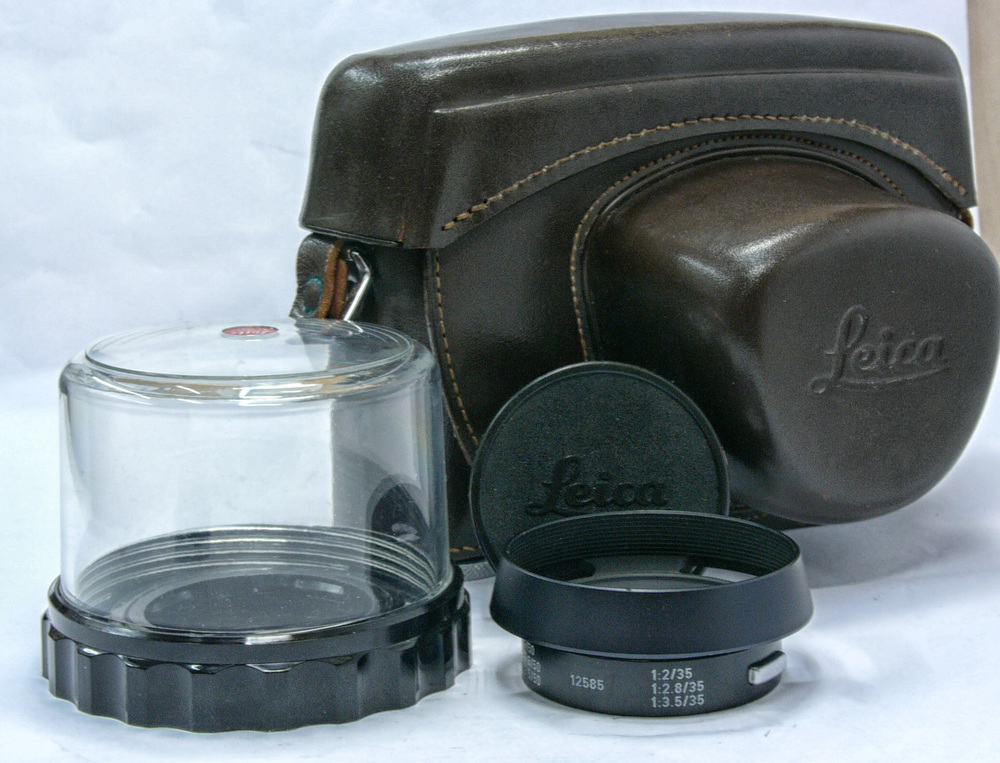
More good news
The story doesn’t end there. Far from it. Both camera and Elmar are in their original Leitz boxes, the lens encased in the domed plastic protector that preceded the modern leather case. And inside the camera box is the original instructions book, ready for the new owner. There is even the original plastic envelope that would have encased the camera and some yellowing vintage tissue paper, presumably added by R.G.Lewis.
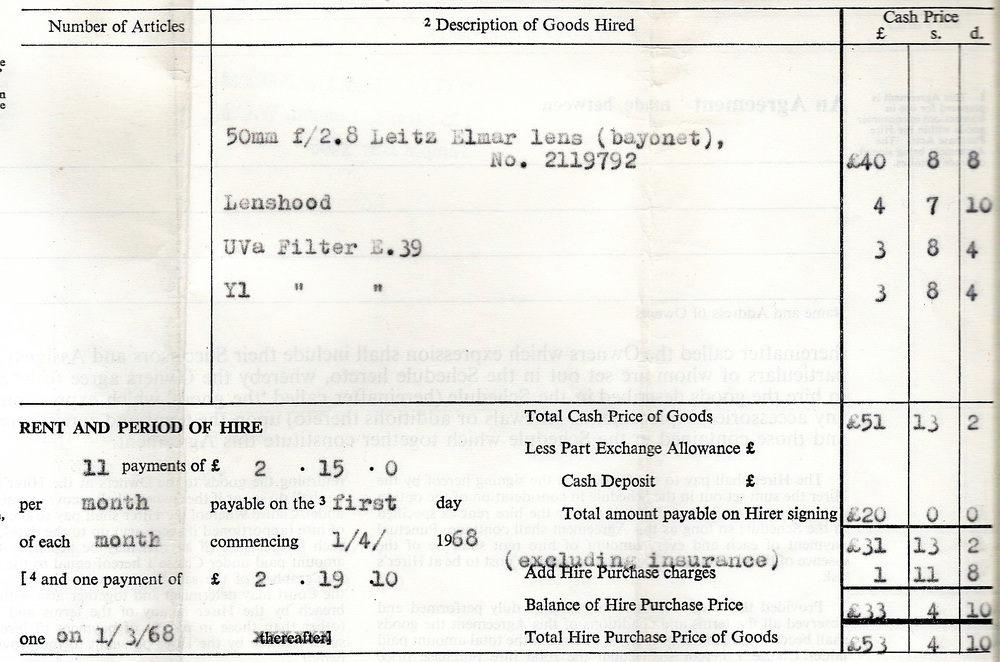
The whole ensemble is complemented by a duet of filters, a lens hood and an as-new dark-brown leather ever-ready case and strap.
One enthusiast acquired this wonderful collection from R.G.Lewis in two stages in the 1960s. The store, at 125 The Strand, was an impressive one and, at the time, was probably the leading Leica outlet in Britain. Peter M bought the camera and case on 27 November 1964 and added three bayonet adapter rings for screw-thread lenses. A clue on the document envelope hints that he was already the owner of a Leica IIIf and intended to use the M2 with his existing stable of screw-mount lenses.
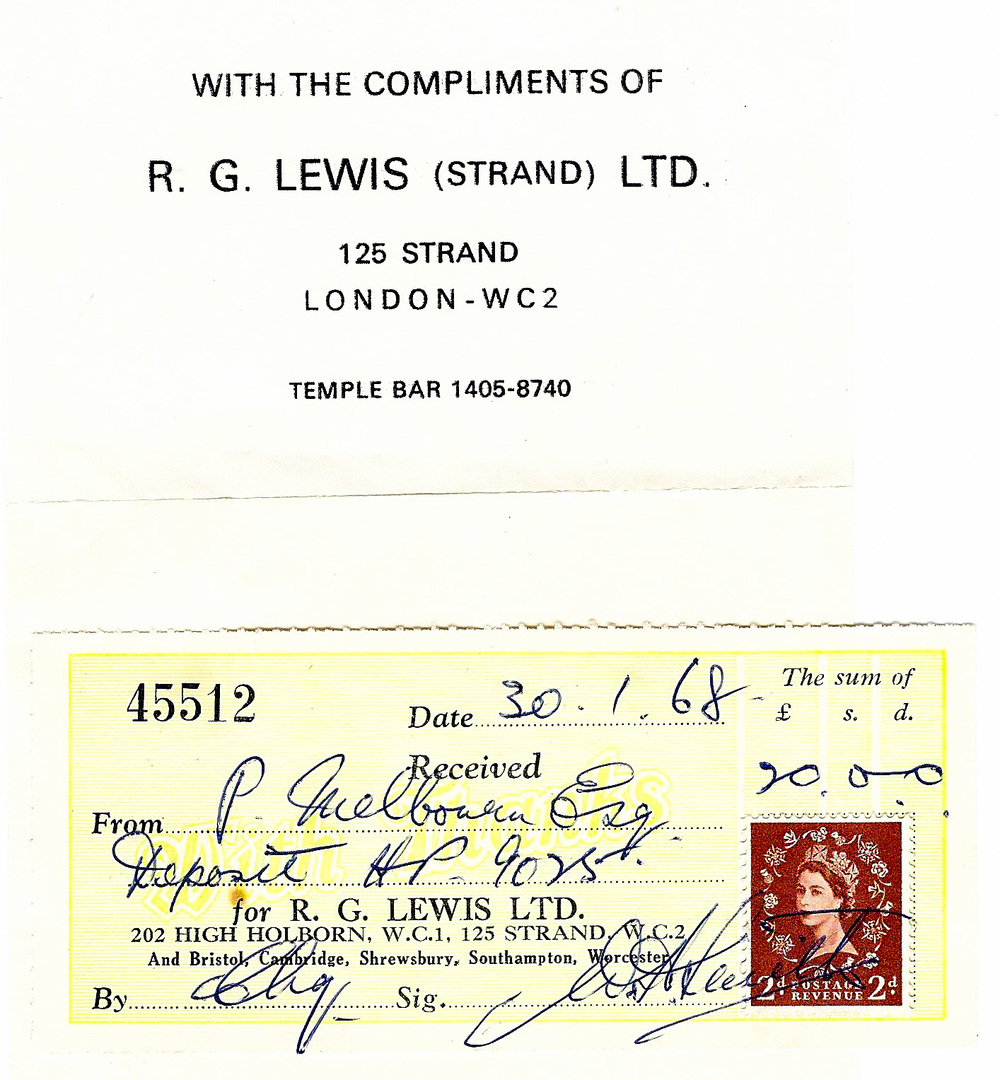
Three years later, in January 1968, Peter was back at R.G.Lewis to add a bayonet M lens to his collection. He must be a man of great taste because he looked after his Leica gear with meticulous care over the years. In October 2015, nearly 51 years after the original purchase, the cherished Leica kit arrived at Red Dot Cameras, looking every bit as though it had left R.G.Lewis earlier this year rather than in the 1960s.
Provenance impresses
A significant part of the attraction of this outstanding M2 is the in provenance, the knowledge that the equipment has been in the hands of one man for over 50 years and in the amount of detail disclosed by the hire purchase agreements for both camera and lens.
Modern readers may find it odd that such complex legal agreements were used to finance what appears to be a relatively small amount of money—£129 for the camera and accessories in 1964 and £51 for the lens, hood and filters in 1968.
But it was normal in those days to finance large purchases through hire purchase. Credit cards were unknown until the late sixties and hire purchase was the norm for credit purchases. HP was known colloquially as the “never never”. Surprisingly, these were large purchases in their day. The £114. 4s 4d (four shillings and fourpence) sounds very little for a Leica. Yet it represented up to six weeks’ wages in 1964 and, in real purchasing terms, is almost on par with the £3,100 cost of the current Leica M-A—itself a very similar camera. To me, a very lowly junior journalist at the time, £114 was more than three months’ wages.
Even the lens, a “reasonable” £40. 8s 8d, was a major acquisition in 1968 and we can think of it as representing a present-day £1,000, just like a similar Leica lens in 2015. The detail of the hire agreement is also fascinating: The lens was bought with a £20 deposit (note the receipt with the 2d duty stamp) and paid off in 11 monthly instalments of £2 15s (£2.75). The interest cost was a mere £1. 11s 8d (about £1.55) and it hardly seems worth the bother to the finance company. But, as I say, money was money in those days. The camera, in 1964, was purchased with a deposit of £25 and followed by 23 monthly payments of £5. Big money stuff indeed.
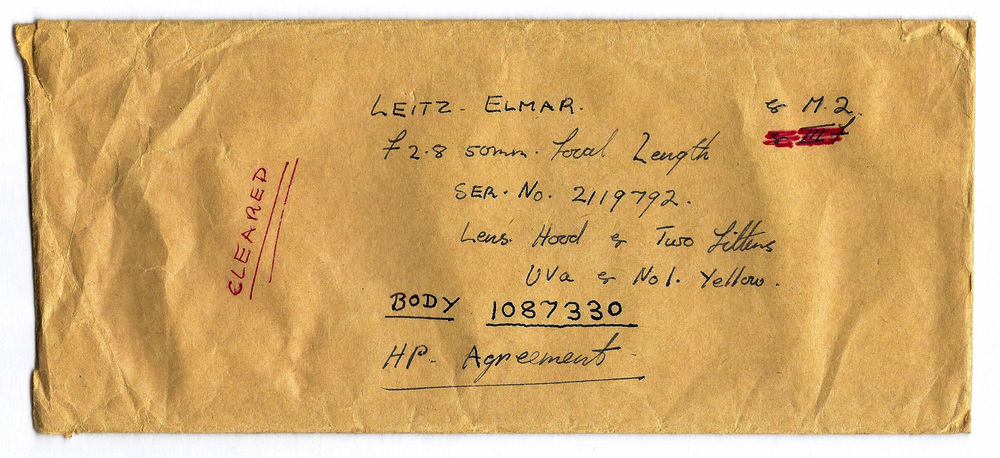
To finish the collection there is a simple brown manilla envelope containing all the documents and details of the equipment, including the reference to the M2’s predecessor, a Leica IIIf.
Put it back on the shelf, Ivor

This really is a rather remarkable compendium of goods and supporting documentation. And you have already probably guessed the outcome. Having heeded the call of the Sirens and fondled the goods, I got an offer I couldn’t refuse. I think Ivor was happy to see the M2 go to a good home. He was certainly keen to keep everything together rather than attempting to split the consignment for easier sale.
He had even thought to keep this unusual set as part of his own collection (voice offstage from Mrs. C: “You’ll regret it, just put it back on the shelf and keep it, you know it makes sense”). Presumably Ivor wasn’t listening because I walked home with a large carrier bag full of vintage goodies, another notch or two on my collectors’ gun. I didn’t have an M2, now I have a very nice one and some interesting paperwork to go with it.
Slippery slope
As William Fagan pointed out in his article last week, at some stage the collector disease takes hold and there is no turning back. I couldn’t help noting William’s comment, “My main interest is in screw-mount models but I also have all the main M film models from the M3 up to the M7. Scary stuff.
I was always determined not to be a collector. Then I bought a 1954 M3 and a 1953 IIIf in quick succession. I’ve since added another M3 (single stroke, 1962) an M7 (Neil by name), an MP and an M6 TTL. Now comes the M2 and it has just occurred to me that I am missing an example of the M4 and M5 (not to mention countless variations of all Ms). I haven’t even started on lenses, though I did find a mint rigid Summicron a few months ago, or seriously delved into earlier screw-mount cameras. Get thee behind me, Satan, is all I can say but without much conviction.
If you are going to dabble in vintage Leica (or a new one for that matter) and want some impartial advice and a fair deal you can do a lot worse than hearken to the Sirens of Old Street. Just remember, though. It’s a slippery slope.
Camera studio shots courtesy of Red Dot Cameras
The first roll – checking out the camera
A couple of weeks after posting this story I write about the importance of running a test roll through a new film camera just to make sure everything is fine. The M2 turned out to be perfect, despite the possibility that it has never been serviced in 50 years, and there were no worries. Here are a few of the test shots. All were taken with the 1965 f/2.8 50mm Elmar that came with the camera. The film is Kodak Tri-X Professional with its trademark grain.
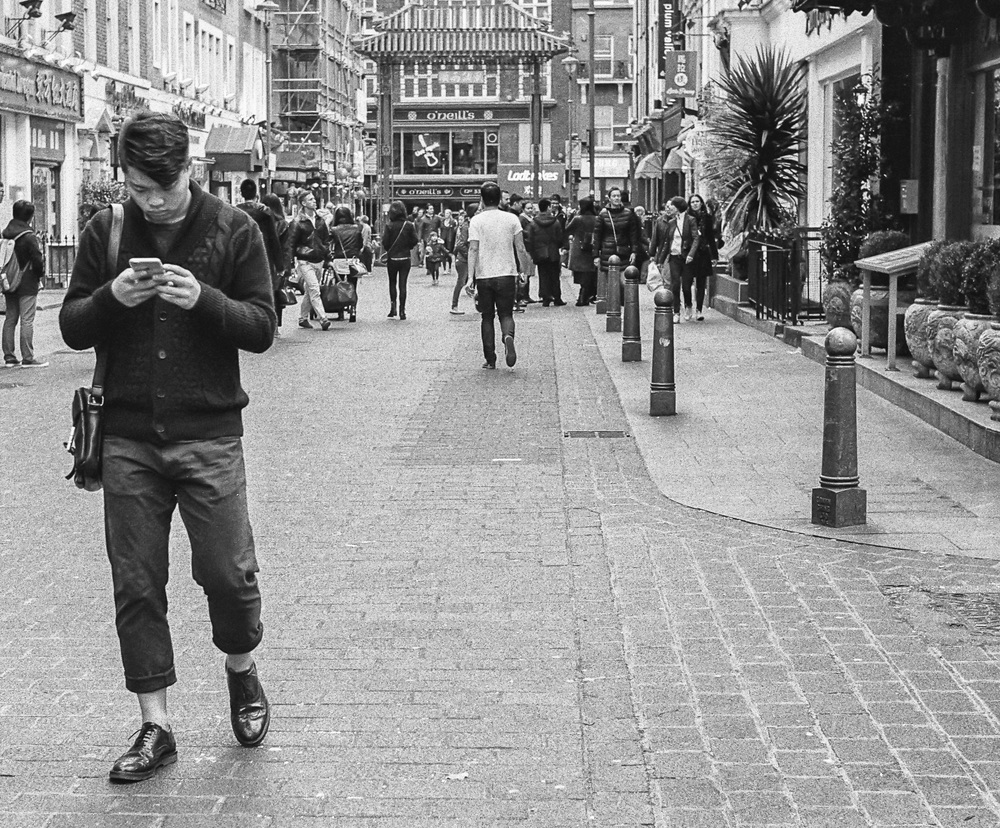
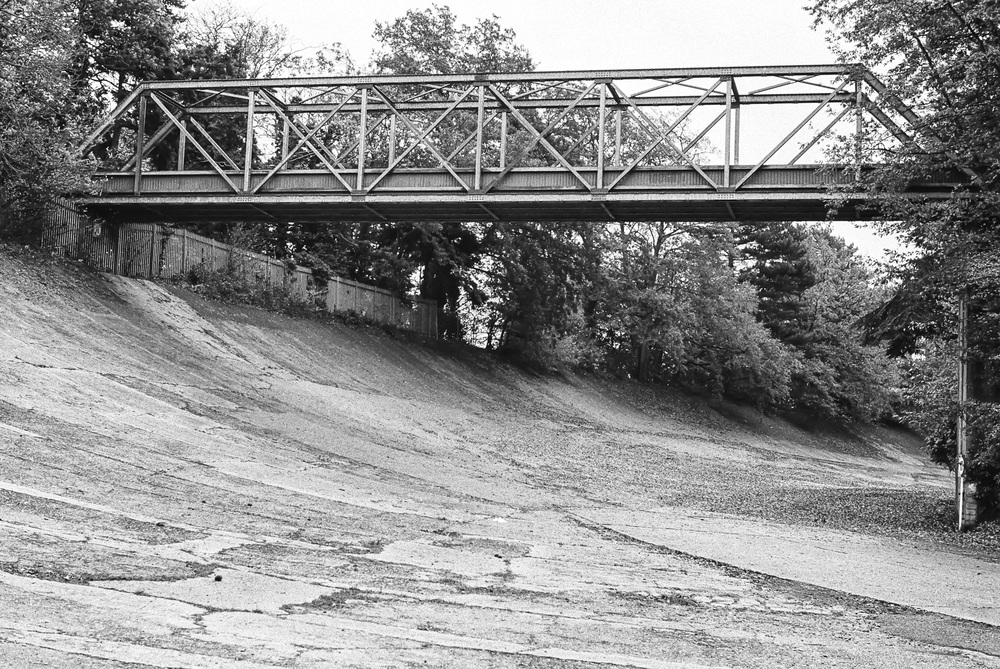
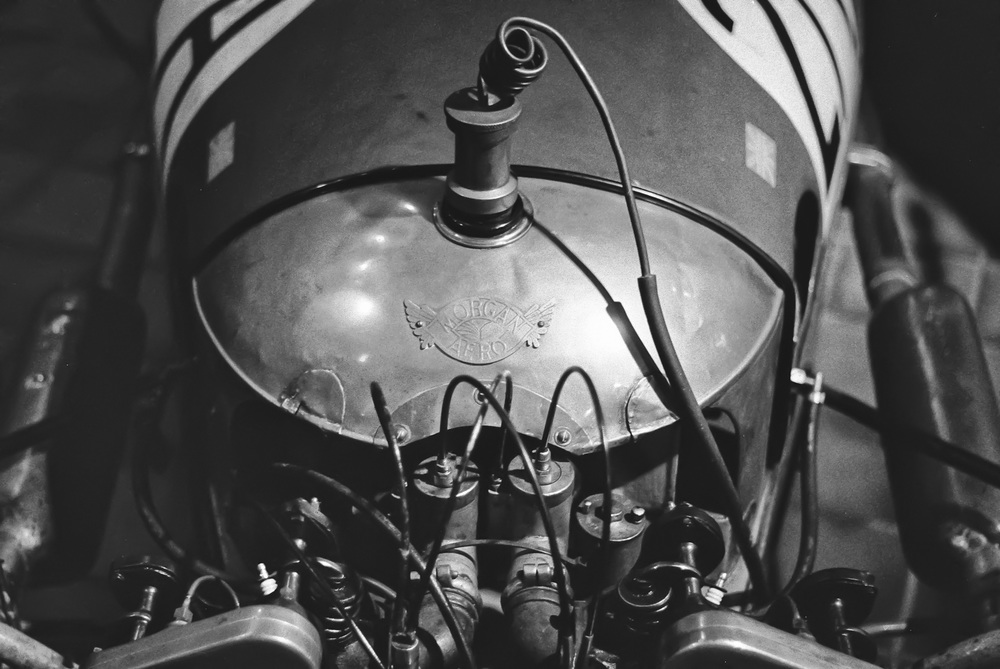
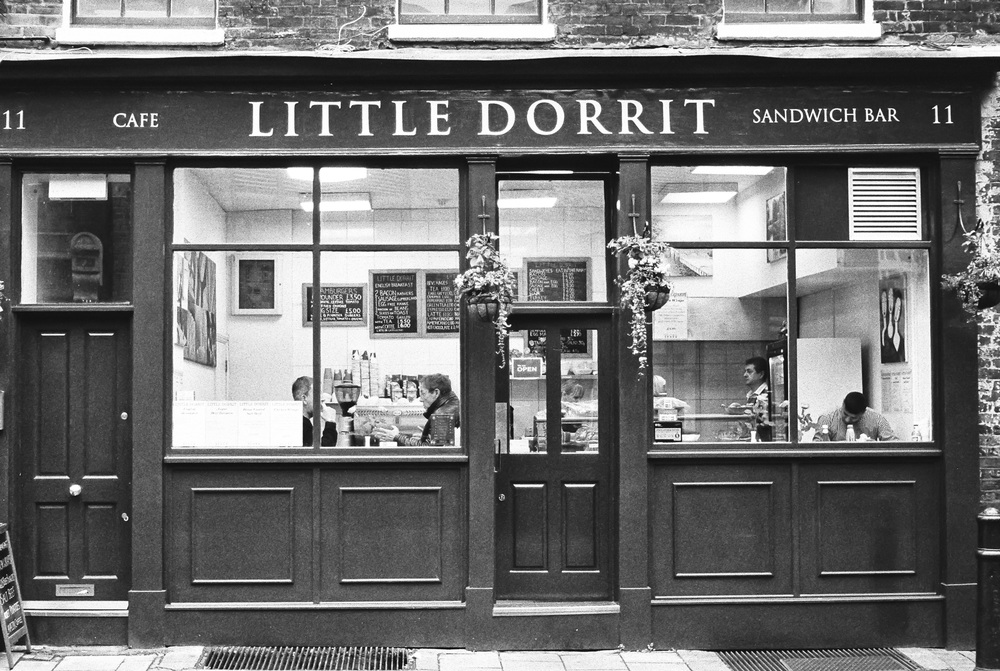


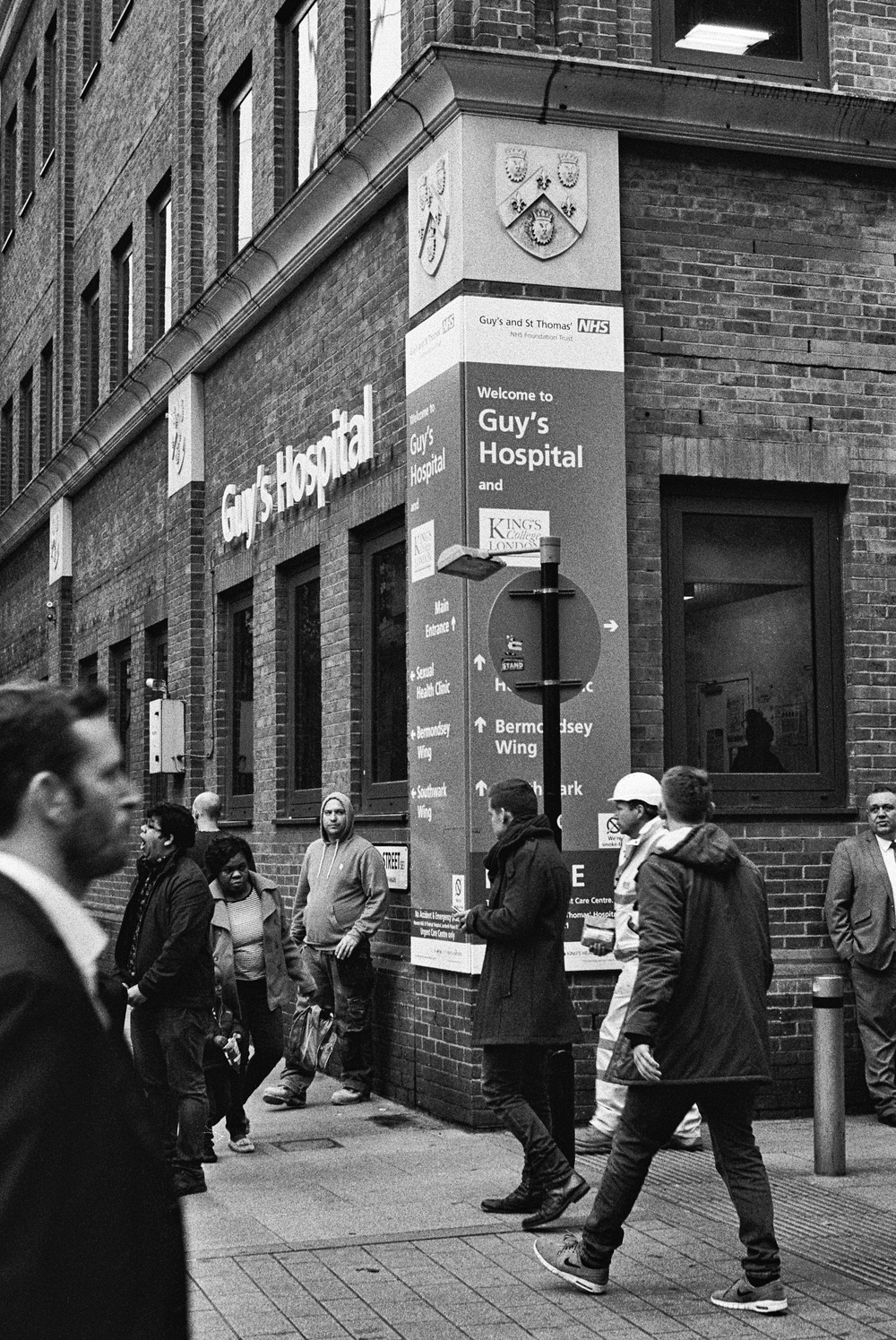
Interested in exploring Kodak Tri-X: Read Eric Kim’s experiences of shooting 100 rolls of Tri-X pushed to ISO 1600


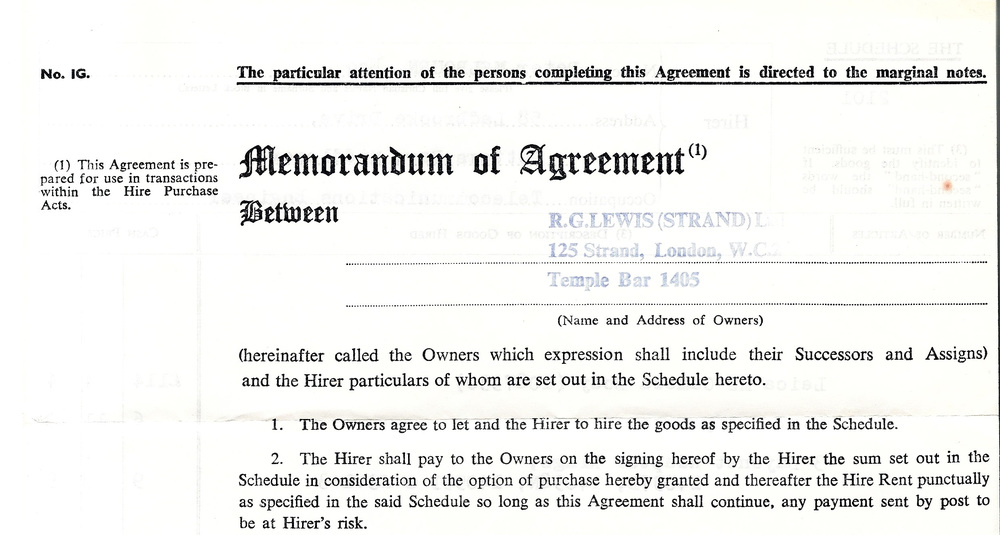
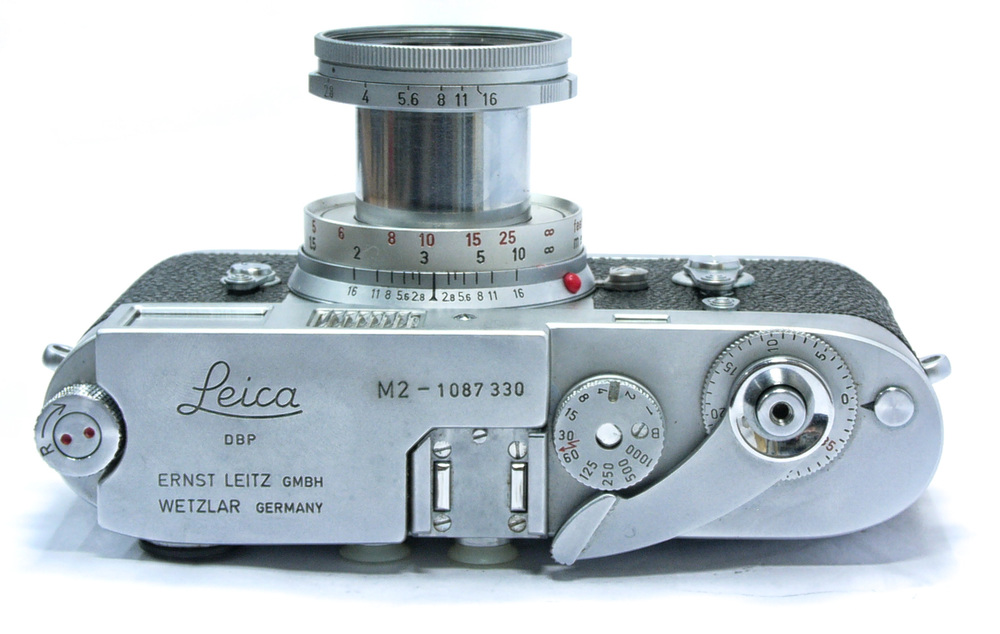
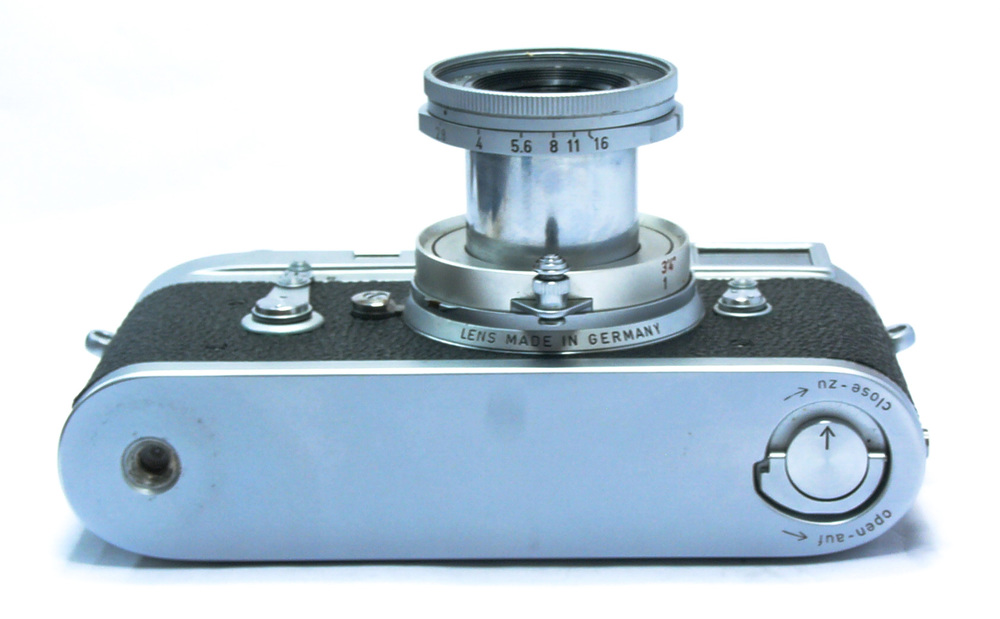
Hello Mike
I met you today at Red Dot today (I was buying the M-A).
What a great story and read. Have to say it looked better in the flesh, it looked good as new.
Wish you all the best. Great to see the background story to such a lovely tool, and to see it being used today by yourself.
Cheers
Bruce Gill
Ah, well met. That M-A looks gorgeous and I hope you will have lots of pleasure with it. I can recommend the Voigtländer VC-II in black if you feel the need for a light meter and don’t want to bother with a handheld.
Readers will soon be suspecting that I live in Red Dot Cameras. It’s a lie. But, as usual, I didn’t walk out empty handed.
Mike
haha, I don’t know Mike, you looked pretty at home on that sofa in there 😉
Thanks Mike. I’m very happy. Big treat to my self…
I noticed the VC-II on your M2 and forgot to ask about it! Tiny little thing.
Just Dev’d the first roll and looking good so far. Will scan tomorrow and print some over the week. Maybe my apprehensions of no meter weren’t justified. Just too easy to worry about, after coming from digital for so long.
ATB
Bruce
Thanks Mike
I am old enough to have set up a few standing orders myself. Believe it or not, I used to regulate the areas of HP, moneylending and APRs etc in a ‘previous life’. As time went on, finance houses replaced retailers as a source of credit and retailers effectively became agents of finance houses. If the person receiving the credit had a bank account, a direct debit mandate was signed at the point of sale. One CEO of a finance house , of my acquaintance, had a mantra for his sales team which went "PD is DD" which meant that the date of the direct debit should be on pay day or as near as possible afterwards.
For the ‘unbanked’, the HP agreement usually meant paying cash to the retailer on a regular basis or dealing with a door to door moneylender (I used to regulate them as well) who would send around a cash collector on a regular basis. The ‘easy money’ lenders still exist today with the likes of the so-called ‘pay day loans’ receiving media attention. These are very expensive ways of borrowing, usually charging much more in terms of APR than credit card providers.
A university professor that I came across in my youth always used the expression ‘the poor pay more’. I did not fully understand it then, but I do now.
A long way from collecting Leicas, but worth noting.
William
Dear Mike
A nice acquisition, with some provenance. I can’t help thinking about the number of visits with cash in hand to RG Lewis or ‘cheques in the post’ that this lot took to acquire, with RG Lewis as the hirer, in the days before electronic funds transfer.
As for the disease, I did say that I had the ‘all the main M film models’ but I do not have the M 6TTL, yet. I see that you have one, but let’s not get too competitive! I recently acquired my third Leica II Model D ( ‘toilet seat’ variant – you can Google the description to check its meaning) at auction in order to acquire the comparatively scarce (10,655 made) Hektor f2.5 50mm. My other two came with the f2 Summar (122,860 made) and f3.5 Elmar (365,852 made). Before someone says ‘he has more money than sense’, I acquired the camera and lens for less than the ‘normal’ price of the lens, so, in essence, the body was for free. The only cost is the space it takes up. Another accidental collection to go with my Summar collection.
William
Thanks, William. I am not feeling in the slightest competitive!
Interesting your comment on the method of payment for the M2. I was also a user of HP in those days, although the most expensive camera I could afford in 1964 was an Agfa Silette–all of £25 even after Amateur Photographer staff discount. I bought that from Westminster Photographic which was just down the road from R.G.Lewis. Strangely, I cannot recall every going into RGL on that site, possibly because Leicas were so far out of my league.
Although 1964 was before the days of direct debit, the new owner of the M2 will almost certainly have signed a standing order for his bank to pay the monthly instalments. Life was much simpler then but it wasn’t entirely a cash-only society.